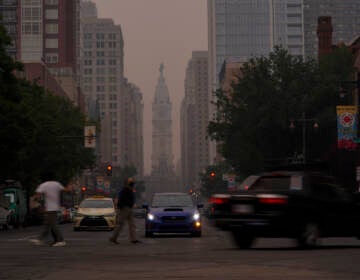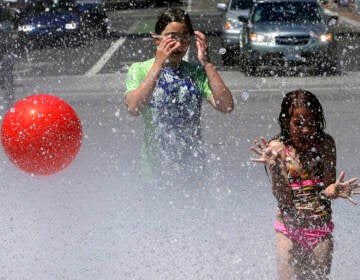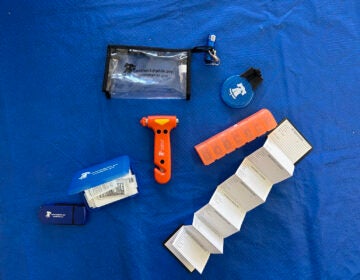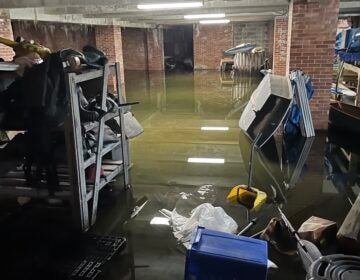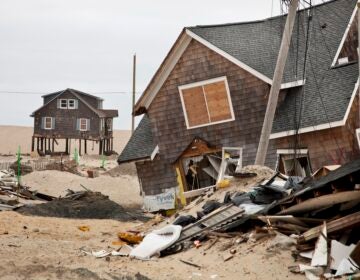Some Philly neighborhoods can be up to 12 degrees hotter due to the built environment, new study shows
A new analysis by Climate Central estimates the impact of elements of the built environment — like dark roofs and parking lots — on temperatures.
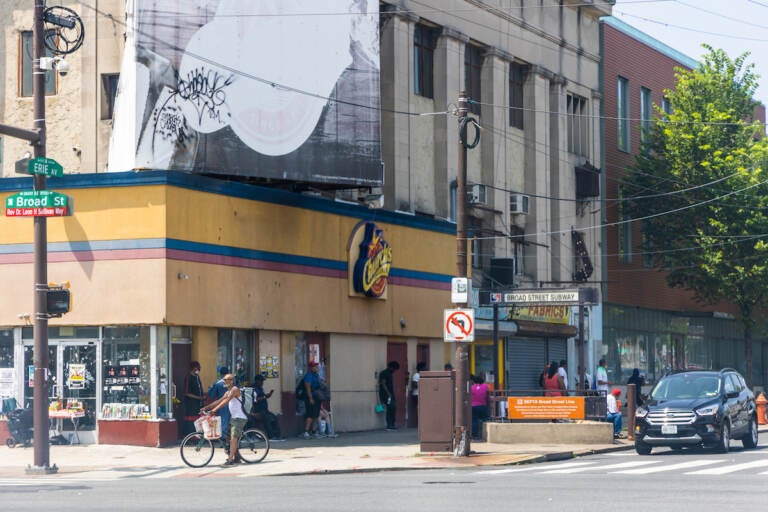
Transit riders wait for the bus in the shade at Broad Street and Erie Avenue in Philadelphia on July 26, 2023. (Kimberly Paynter/WHYY)
This story is part of the WHYY News Climate Desk, bringing you news and solutions for our changing region.
From the Poconos to the Jersey Shore to the mouth of the Delaware Bay, what do you want to know about climate change? What would you like us to cover? Get in touch.
More than 900,000 people in the Philadelphia area live in places made at least 8 degrees Fahrenheit hotter by features of the built environment like dark pavement and roofs, according to a new analysis from the research nonprofit Climate Central.
“We’re talking about urban areas that are a lot warmer than the surrounding rural parts,” said Kaitlyn Trudeau, senior research associate at Climate Central. “That’s because of building materials, because we’ve replaced greenspace with asphalt pavement, and also population density and just human activity.”
The analysis comes as the Philadelphia area braces for a heat wave. Human-caused climate change makes heat waves longer, more frequent, and more intense. This year, El Niño is making things even warmer.
Climate Central’s study of 44 cities nationwide uses land cover type to estimate how much hotter a census tract is now than it would be if it were undeveloped natural land, Trudeau said. The analysis used a process developed by one team of researchers to characterize census tracts based on factors such as building height, population density, and the reflectivity of surfaces, then used a model by another research team to estimate how these factors affect temperature. The study did not incorporate observed temperature data.
“We looked at … what cities basically are comprised of, … and we looked at how those kinds of materials either reflect or absorb heat,” Trudeau said. “We basically estimated how much more additional heat is in a certain city due to the built environment.”
Climate Central’s analysis found that the urban heat island effect — or the ability of roads, buildings, and other infrastructure to trap the sun’s heat — is likely raising temperatures across the greater Philadelphia area, from Haddonfield, New Jersey, to Ambler, Pennsylvania, by between 5 and 12 degrees.
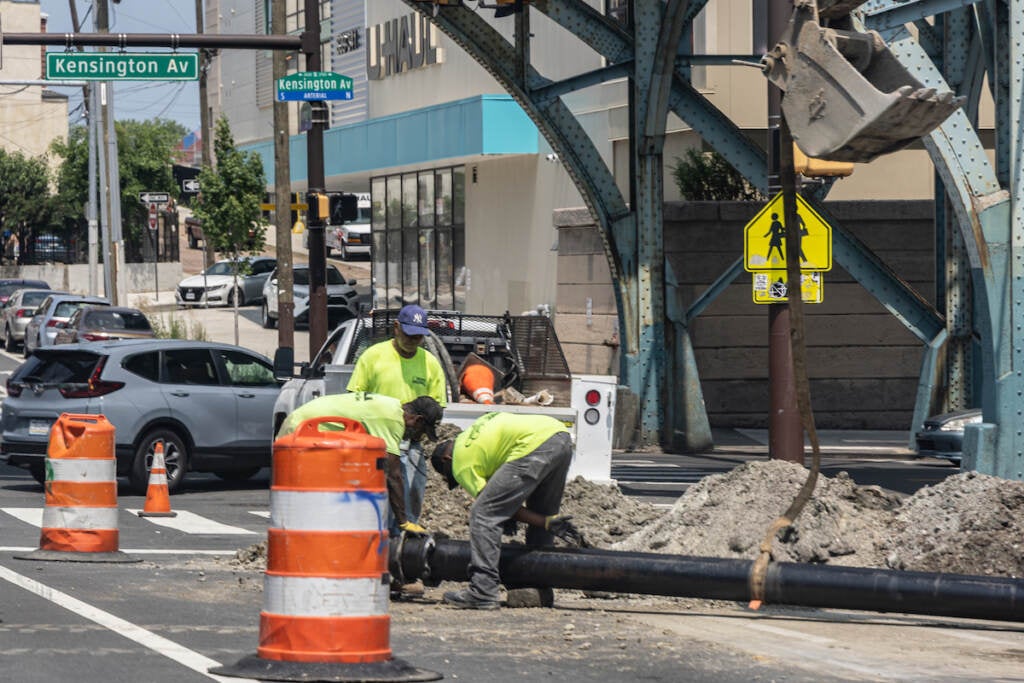
“Because our cities are largely pavement, dark surfaces, concrete, and impervious materials, that actually traps a lot of heat in these city environments, kind of like a little dome that sits over the city,” Trudeau said. “These are real consequences and real impacts we see on our children, on our economies, and of course the natural environment around us.”
Climate Central estimated that roughly 447,000 of the close to 2.5 million Philadelphia-area residents in the study area live in census tracts that are at least 9 degrees hotter due to the urban heat island effect, and more than 1,000 people live in tracts that are at least 12 degrees hotter.
The effect is stronger in some places than in others.
The analysis found the areas most impacted by the urban heat island effect locally include Center City, South Philadelphia, and North Philadelphia. The areas least impacted include Plymouth Meeting, Pennsylvania, Moorestown, New Jersey, the Philadelphia International Airport, and the former PES refinery in Philadelphia.
“There’s a huge range of this warming,” Trudeau said. “Areas where people are already disproportionately affected by the effects of climate change and really don’t have the means to move or adapt, … usually those are the areas where people are more impacted.”
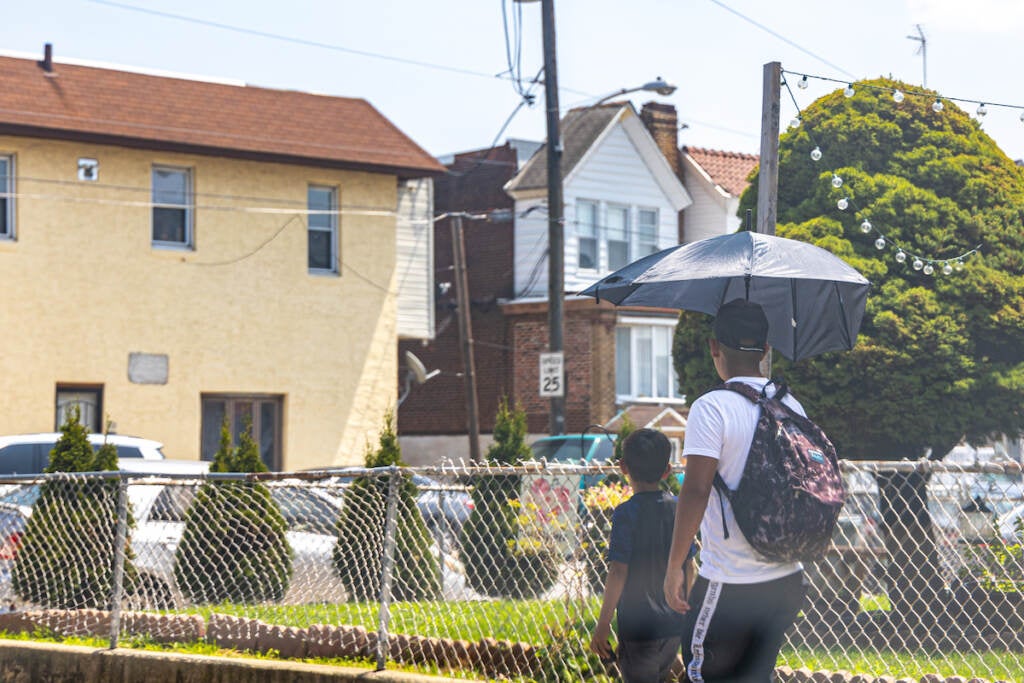
Within Philadelphia, it’s well known that heat is not distributed evenly. Data from 2013 through 2015 showed the temperature difference between Philly neighborhoods can be as wide as 22 degrees. Areas of North, West, and South Philly were the hottest, while areas of Northwest and Northeast Philly were the coolest.
The parts of the city most vulnerable to heat include large areas of North and West Philly, according to a heat vulnerability index calculated by the city’s Department of Public Health that also considers vegetation cover and residents’ age, health, and socioeconomic status.
Racism has shaped Philadelphia’s built environment. A 2022 study by researchers at Drexel found that higher proportions of homes in formerly redlined neighborhoods had low tree cover and dark, flat roofs, compared to other neighborhoods — making them more vulnerable to heat.
Philadelphia has gotten hotter in recent decades. The average summer temperature in the city has gone up more than 3 degrees since 1970, and average nightly lows have risen even more, according to analyses by Climate Central. The city now sees around eight more days each year when the heat index exceeds 90 degrees than it did in the late 1970s.
“It’s concerning because these are really dangerous conditions that are going to make it very difficult to live in these environments in the future,” Trudeau said.
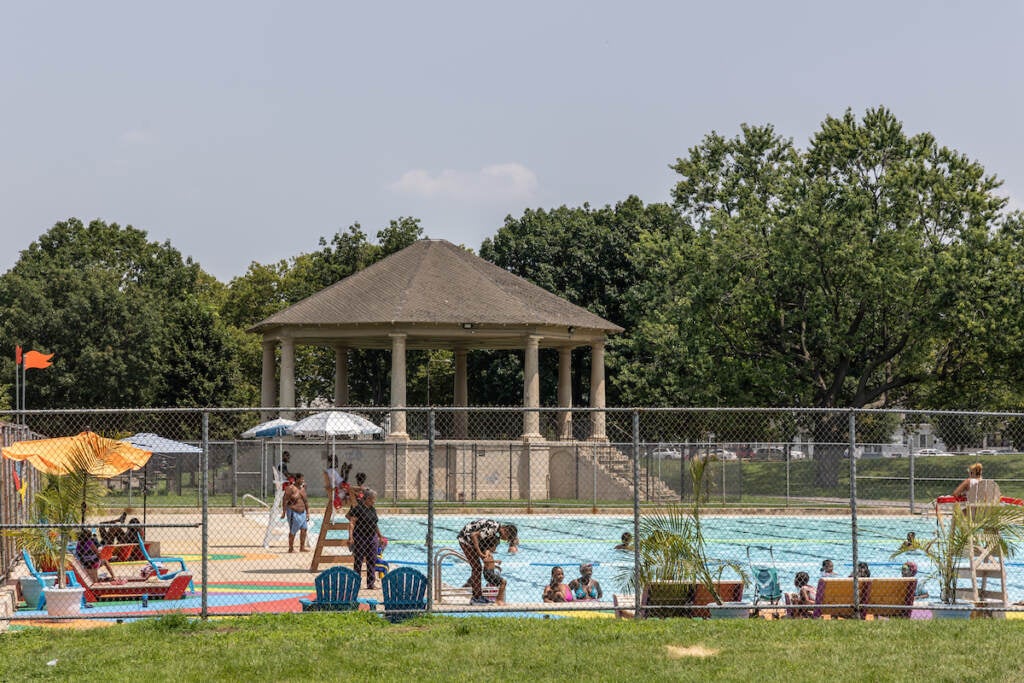
Last summer, citizen scientists drove around Philadelphia with thermometers attached to their cars to further document heat in the city. Philly was one of 14 cities and counties across the country chosen by the National Oceanic and Atmospheric Administration that year to participate in the agency’s urban heat island mapping project.
Ivana González, a community outreach coordinator with the nonprofit Esperanza, told PlanPhilly at the time she hoped the project would provide data to back up the experiences of residents in the Hunting Park neighborhood in North Philadelphia, considered one of the hottest neighborhoods in the city due to the presence of industry, dark rooftops on aging housing stock, and a lack of trees.
Results of the heat mapping study showed a temperature differential between areas of the city of around 10 degrees, with the hottest areas largely in Center City and South Philly. The report concluded that the green space of Fairmount Park keeps that area cooler during the day, while residential areas with few trees and lots of pavement and high-density commercial centers seem to “trap and accumulate heat.”
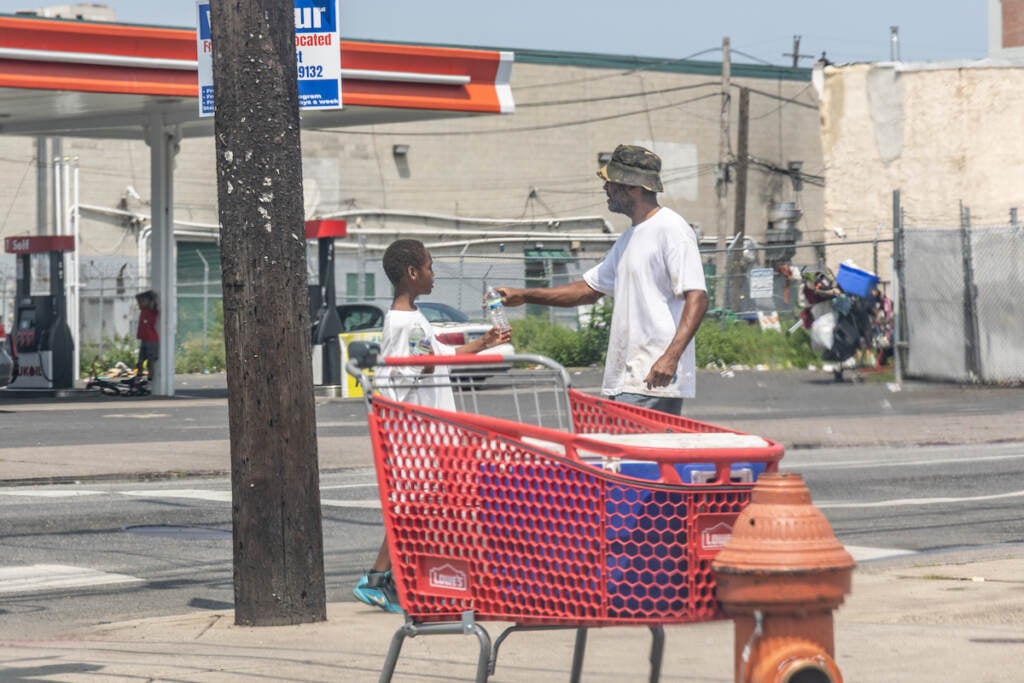
“After results came in, they didn’t show what we were expecting,” González said. “When you’re in neighborhoods where the buildings are shorter, and there’s still a very high level of materials like concrete and bricks that are holding onto to heat, and a lack of trees and green spaces and shading options, then you can see how the difference can be felt, when the humidity is high and the breeze is low.”
There are ways to keep hot urban areas cooler, Trudeau said. These include painting roofs or streets light colors, adding green roofs and other green space, and organizing cities in ways that allow air to flow.
“It’s just about building smarter,” Trudeau said. “We can still make these choices in ways that benefit members of our community and look after each other.”

Subscribe to PlanPhilly
WHYY is your source for fact-based, in-depth journalism and information. As a nonprofit organization, we rely on financial support from readers like you. Please give today.




